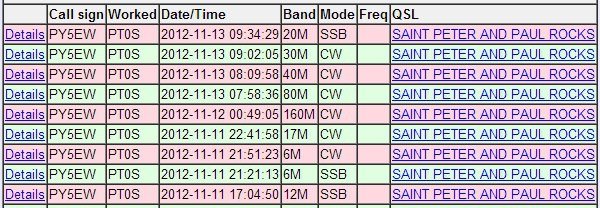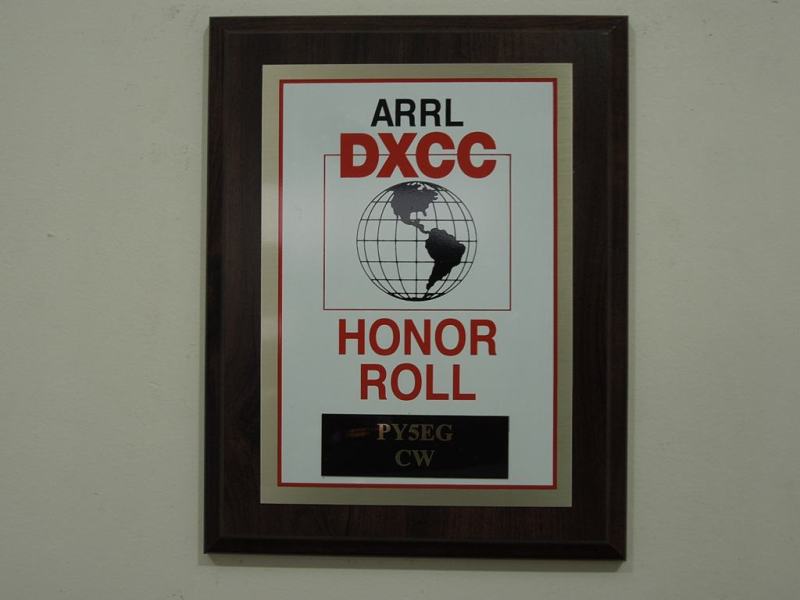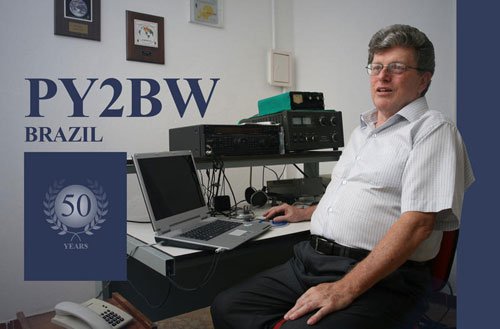Os contatos com a arquipelago de São Pedro e São Paulo ja estão disponiveis no LOTW
Veja otimo trabalho do Andre – PY5EW
PT0S – St Peter and St Paul Rocks
UPDATE by Pilot station HA5X
The ops are all right, but still coping with high waves affecting their equipment and the lack of space which forces them to sleep in the chairs. I have also updated the log, it now contains nearly 29k QSOs, and George was able to squeeze a long awaited missing log from the earlier days of the expedition which was still missing due to the unreliable satellite link. Clublog is also updated, as well as LoTW, but do not expect your credits to appear quickly, it looks that the delay at LoTW is greater than we had initially thought.
George AA7JV states: The waves just never stop. The 10 m vertical got swamped again, this time we have filled the gamma match capacitor with Teflon grease. No salt water can get in there any more. Also, the CAT5 control cable to the main antenna tuner got shredded by the strong wave action at high tide and the sharp rocks it was laid over. The cable was replaced (and suspended) this morning. We got buried a few times by some large waves as we did the job at high tide; we did not want to lose the time waiting for low tide. (Low and high tides alternate approximately every 6 hours. The tidal range on SPSP is about 2.5 meters.)
We are all suffering from a lack of sleep. It is no longer just me, others are starting to fall asleep at the key. (We also ran out of Coke, now munching on instant coffee powder to stay awake. Chocolate and other treats have been long gone. It is not that we did not plan sufficiently, but we are sharing with our Brazilian Navy friends: their facility and our stuff.)
Last night we concentrated on Japan on 30 and 40 meters. We feel that it is better to make actual contacts than chase elusive openings on 160 meters.
One aspect of the location is that most bands are open to both Europe and North America at the same time. This results in huge and very difficult to manage pile-ups. Also, a lot of Europeans feel that we favor NA, while some North American stations believe that we favor Europe. For the record, the QSO counts are about even, maybe one or two percent in favor of EU. If we could, we would favor Japan and East Asia, as this is a very difficult QSO for them (especially on the low bands) but we can not get enough openings to really make a difference.
Low Bands:
160: We spent only a couple of hours on 160. Noise was high. We were not on 160 at our SR.
80: The band was also suffering from atmospheric noise. (A front passed through late yesterday afternoon and early this morning, with its associated lightning activity.)
40: Forty meters was in excellent shape last night and that is where we focused our energies. (And on 30.) Signals were strong from both Europe and NA. Later, around our SR, we were able to work a lot of JA-s. Their signals, however, were very fluttery and difficult to copy.
June 28, 2012: The Araucaria DX Group, in conjunction with the TX3A Team, is pleased to announce a DXpedition to St. Peter and St. Paul Rocks, PY0S, under the call sign PT0S. The DXpedition will take place approx November 10-22, 2012. PT0S website.
There has been an official ban on Amateur Radio activities from PY0S. Although the ban, which was created for environmental and safety reasons, remains in place, the Araucaria DX Group was given a special permit by Brazil’s SECIRM (Secretaria da Comissao Interministerial para Os Recursos do Mar), the Brazilian Navy, Ministry of Environment and LABRE to conduct a two week long operation.
The operation will have a strong low band focus. There will be a dedicated 160 meter station operating on 160 meters from sunset to sunrise. A second station will be on 80 and 40 meters at night. During the day we will operate two stations on the higher bands — and 6 meters — based on conditions. RTTY will also be supported.
The DXpedition’s goal is to give this rare and difficult entity to as many amateurs as possible, taking maximum advantage of this unique opportunity. The group will be using newly designed RX antennas and receiving equipment to allow small and QRP stations to work PT0S on all bands, but especially on 80 and 160 meters.
All QSOs will be loaded onto LoTW within 36 hours of taking place.
Operators will be Fred Carvalho PY2XB (PY2XB/PY0F, PQ0F, VP5/PY2XB, 8P9XB), Peter Sprengel PP5XX/PY5CC (PY0FM, PW0T, HK0NA). Tomi Pekarik, HA7RY and George Wallner, AA7JV. Due to environmental considerations, we have been limited to four operators.
Source : DXWorld.net





Comments are closed.